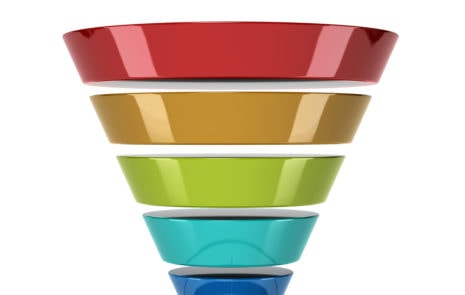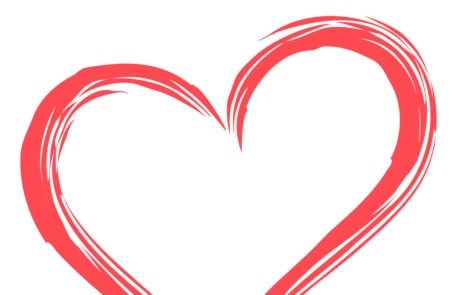
How do you assess your content marketing effectiveness?
Assess content marketing effectiveness 4 ways
A marketer from New York Life Insurance asked this question in our content marketing workshop, “How do you assess your current content marketing effectiveness? How should you be tackling that on an ongoing basis?” This is a top 100 content marketing question.
A marketer from Reynolds Brands asked a similar question, “How do I measure the effectiveness of content to gain more support internally to fund more content creation?”
To answer these questions, you must discover:
- Is your content on target, on mission, on strategy, and on message?
- Are buyers finding your content?
- Are they consuming your content?
- Do buyers move forward toward a purchase?
How to make your content on target, on mission, on strategy, and on message
Many marketers start creating content by … just creating content. Instead of taking that tactical approach, become a strategic marketer to increase your content marketing’s effectiveness.
Start creating content only after you:
- Understand the buyer.
- Frame a content mission.
- Develop a content strategy.
- Create a single consistent message.
To gain insights about buyers, perform buyer persona research
Quality content marketing is all about teaching before you sell. To be an effective teacher, first, understand what your buyers most want to learn.
To find out what buyers really need, perform buyer persona research.
Why? Because trying to create content before you understand your buyers is like working in the dark.
You can’t what see buyers need or how to help them.
There is a chance you might get lucky, but you might not.
You are 5 times likelier to succeed in content marketing with buyer persona research! Those are the findings of a Content Marketing Institute/Marketing Profs B2B research study.
More than 3 out of 4 (77%) of the most effective business-to-business marketers create a buyer persona to help them assure content marketing effectiveness.
In contrast, only 14% of the least successful marketers create buyer personas.
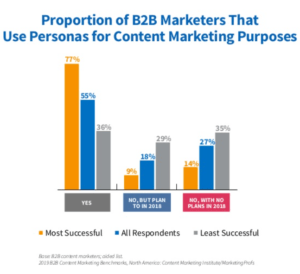
Among business-to-consumer (B2C) marketers, more than half use buyer personas to create content marketing says Content Marketing Institute/Marketing Profs research.
Marketers who use buyer personas get better results.
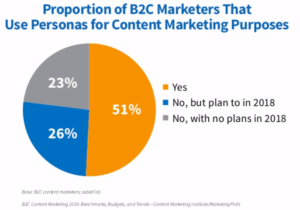
Know your buyers better than competitors do
To assure content marketing effectiveness, take a strategic approach. Start by performing buyer persona research to learn:
- Who are your buyers, exactly?
- How do they frame their problem? What pain points do they need to address?
- Where do they go to get information to inform their purchase decision?
- What obstacles do they encounter during the buyers’ journey?
- How do they overcome these obstacles to reach a purchase decision?
Once you learn buyers’ needs, information habits, and decision processes, you’re ready for the next steps.
Write down your content marketing mission
A written content marketing mission statement gives you a litmus test for each piece of content you produce.
Unfortunately, as few as 1 out of 5 marketers have written down their content mission.
To gain content marketing effectiveness, become one of the few leaders who write down a clear content marketing mission. To create your content mission, follow our formula:
The source will provide the best information, inspiration, and/or relief for the target audience about the topic(s)to help them achieve their goal.
Here’s a template to help you frame your mission:
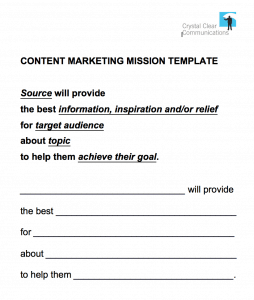
To spark some ideas, here are 3 examples of content marketing missions:
Example #1: Digital Photography School has what you need to get your photography to the next level. From basic to advanced, we offer daily tips, resources, tutorials that will help you get the most out of your camera.
Example #2: The Red Bulletin features breathtaking stories out of the World of Red Bull and its Playgrounds. Delivering the unexpected, the magazine honors those who don’t play by the rules, who push the limits, have a lust for life, swim against the current, have a passion for adventure, and are not afraid to walk courageous new paths.
Example #3: Tellabs will be the best source of information on Optical LANs (local area networks), delivering useful information, thought-provoking insights, resources, and relief. We show IT buyers how to: address technology and business challenges, identify key trends, and improve user experiences.
Once you have written your content mission, make sure all the content you create is on a mission.
Next, frame your content marketing strategy
Writing your strategy down will vault you ahead of many competitors in content marketing effectiveness.
Why? Because only one out of 3 marketers have taken this crucial step.
Many marketers avoid writing a content marketing strategy because they imagine a mountain of work that will take months, enshrined in thick binders no one will use. No wonder people avoid writing down their strategy.
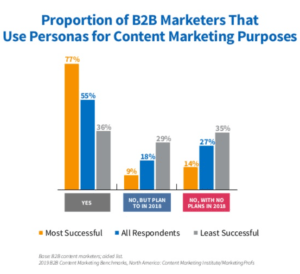
Instead, fit your strategy on one page to make it easier to focus on – easier for you, your internal clients, and executives.
Here’s our free one-page content marketing strategy template.

It aligns your company’s objectives and goals with your content marketing strategies and metrics – all on one page.
For details on how to create a one-page strategy, see my Content Marketing Institute blog, Simplify Your Content Marketing Strategy with a One-Page Plan.
Agree on one consistent marketing message
To gain buyers’ support, you need a clear and concise marketing message, delivered consistently over time so that it becomes credible to buyers.
A great tool to create your marketing message is a Message Map. Co-create your Message Map in a big-tent meeting that brings together everyone with a say in the message.
Using a Message Map, everyone in your company will learn how to tell your business story better.
Why? Since your Message Map is co-created, it gains buy-in upfront. A Message Map simplifies and streamlines your story by capturing it all on one page.
Leading companies such as AT&T and Intel use Message Maps, enabling them to tell their story in just 7 seconds or 23 words. That’s the length of an average sound bite in news media.
For example, here’s a 7-second Message Map for the Virgin Hotel Chicago.
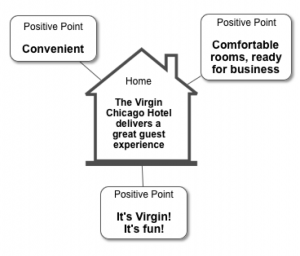
This Message Map boils down Virgin Hotel Chicago’s marketing message to 19 words, or 6 seconds – short enough to break through people’s limited attention spans.
Most important, the Message Map answers people’s #1 question: What’s In It For Me? Looking through the eyes of buyers, that’s the most important question your marketing message needs to answer consistently.
Now that your content is on target, on mission, on strategy, and on message, you’re well on the way to achieving content marketing effectiveness.
So you’re ready to take the next step.
Find out: are people finding your content?
It’s necessary to create content, but creation alone is not sufficient to ensure content marketing effectiveness. You need effective distribution and promotion.
Make sure your content is getting noticed by your target audience.
That’s why it’s crucial to perform search engine optimization (SEO) on your content. Search is the number one source of website traffic for most companies, ranking ahead of social media:

Not all content types are equally credible. Consider the relative credibility of each content type you create.
The Edelman Trust Barometer provides good insights:
- The content found by search is more credible than content found on social media.
- Owned content on your website, blog, and email is more credible than what’s found on social media.
- Social media ranks dead last in credibility. You can expect even higher levels of skepticism for social media posts, going forward, given ongoing problems at Facebook and its competitors.
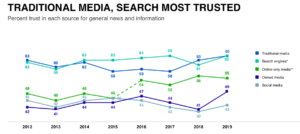
Analytics reveal content marketing effectiveness
Next, use your website analytics to learn which pages draw the most traffic, and which don’t hold your readers’ interest. Especially look at your top-performing pages, your bounce rate, and time spent on your website.
Where’s the bulk of your traffic coming from search, referrals, or social media? Dive into the details to see exactly what attracts people to your website.
After you study Google Analytics, look at other available analytics:
- Examine email open rates and click-throughs.
- Use eye-tracking software such as Hotjar to see where people’s eyeballs dwell on your web pages. Watching tracking videos will suggest ideas about how to adjust content to increase its pull.
- Consider usability testing on your existing or new website.
- Study analytics from trade shows, public relations, and other functions closely related to marketing.
Here are ideas on how to maximize the benefits you get from measuring your content marketing effectiveness with all-in analytics.
Remember, there are two primary purposes to measurement analytics. Effective measurement does two jobs:
- Demonstrates to business leaders and internal clients that content marketing is achieving its aims.
- Shows how to continuously improve your content’s performance by detecting patterns in your metrics.
Here are the aims that marketers successfully achieve with content marketing today, according to Content Marketing Institute studies. Here are the goals that consumer marketers are achieving:
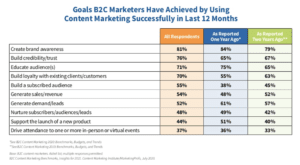
And here are the goals that business (B2B) marketers are achieving:

Track soft and hard conversions
Convert people to customers in baby steps. First, ask for something small.

For example, invite people who read a blog to:
- Read another blog on the same topic
- Watch a video on that topic.
- Listen to a podcast on that topic.
- Read an ungated white paper or other long-form content.
Make small asks first. Track the “soft conversions” that result.
Why? Because people who do a “soft conversion” are likelier to do a “hard conversion,” due to the human consistency principle.
After people take a small step to convert, then make a bigger ask. Invite them to:
- Subscribe to your blog or print magazine.
- Download an e-book, guide, white paper, or other lead magnets.
- Take an assessment or quiz.
- Join a live webinar or in-person event.
- Download your app. Make sure your app is easy for users.
To assess the maximum effectiveness of your content marketing, ask:
- Is your content on target, on mission, on strategy, and on message?
- Is your content found by potential customers?
- Are buyers consuming your content?
- Are buyers moving toward a purchase, as seen through soft conversions and hard conversions?

“How do you assess your current content marketing effectiveness?” is one of marketers’ Top 100 Questions about #contentmarketing. Here are the answers.
Related Posts
Top 100 Content Marketing Question: How do you track conversions / preferred method?
To track conversions, invite soft conversions first, hard conversions next Why? Because it works best when you ask someone for a small favor first....
Book Preview: Killing Marketing by Joe Pulizzi & Robert Rose
What if everything we ‘know’ about marketing is wrong? Joe Pulizzi and Robert Rose raise fundamental questions about marketing in their new book, Killing...
Speak heart to heart
To break through to everyone in your audience, use Message Maps to simplify your message. Your messages are most powerful when you speak heart...
“Can content marketing become an overall site content strategy?”
A marketer at MSC Industrial asked, “Can content marketing become an overall site content strategy? Should we take a ‘content-first’ approach to help with...

